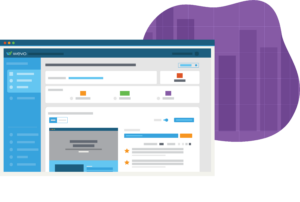Contents
-
Marketing: Crafting Compelling Narratives
Understanding User Perspectives for Effective Messaging User research provides invaluable insights into the preferences, needs, and pain points of your target audience. Armed with this knowledge, marketing teams can craft more compelling narratives that resonate with users that can ultimately increase conversion rates. From targeted advertising to content creation, user research ensures that every marketing effort speaks directly to the heart of the audience. -
Product Development: Blueprint for Success
Building Products Aligned with User Needs User research is the cornerstone of successful product development. By delving into user behaviors and preferences, product development teams gain a blueprint for creating products that not only meet but exceed user expectations. Iterative testing based on user feedback ensures that products evolve in sync with user needs, leading to higher user satisfaction and loyalty. -
Customer Support: Proactive Problem Solving
Anticipating Issues Before They Arise User research is a powerful tool for customer support teams to anticipate and address issues before they become widespread problems. By understanding user pain points and common challenges, customer support can proactively develop solutions and enhance user experiences. This not only reduces the workload on support teams but also fosters positive customer relationships. -
Sales: Tailored Solutions for Client Needs
Empowering Sales Teams with User-Centric Insights User research arms sales teams with a deep understanding of the user journey. This insight allows sales professionals to tailor their pitches, addressing specific pain points and showcasing how the product or service aligns with user needs. The result is more effective sales strategies and a higher likelihood of converting leads into satisfied customers. -
Design: Enhancing User-Centric Experiences
Iterative Design Based on Real User Feedback While traditionally associated with design, user research remains a cornerstone for creating user-centric experiences. By continuously gathering and analyzing user feedback, design teams refine interfaces, improve usability, and enhance overall user satisfaction. This iterative approach ensures that design decisions are rooted in real user needs, leading to more successful and user-friendly products.



